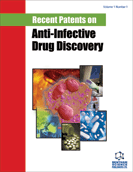Abstract
Surfactant protein (SP)-A and SP-D belong to the “Soluble C-type Lectin” family of proteins and are collectively known as “Collectins”. Based on their ability to recognize pathogens and to regulate the host defense, SP-A and SP-D have been recently categorized as “Secretory Pathogen Recognition Receptors”. SP-A and SP-D were first identified in the lung; the expression of SP-A and SP-D has also been observed at other mucosal surfaces, such as lacrimal glands, gastrointestinal mucosa, genitourinary epithelium and periodontal surfaces. Since the role of these proteins is not fully elucidated at other mucosal surfaces, the focus of this article is on lung-SP-A and SP-D. It has become clear from research studies performed over a number of years that SP-A and SP-D are critical for the maintenance of lung homeostasis and the regulation of host defense and inflammation. However, none of the surfactant preparations available for clinical use have SP-A or SP-D. A review is presented here on SP-A- and SP-D-deficiencies in lung diseases, the importance of the administration of SP-A and SP-D, and recent patents and research directions that may lead to the design of novel SP-A- or SP-D-based therapeutics and surfactants.
Keywords: Surfactant protein-A, surfactant protein-D, host defense, innate immunity, inflammation, antimicrobial, antiinflammatory, respiratory distress syndrome, bronchopulmonary dysplasia, infection
 9
9





















